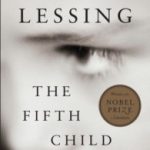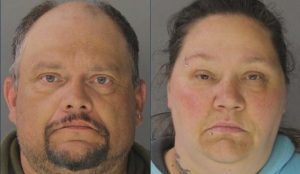There was no good reason for Bob Ramsey, a veteran St. Louis defense attorney, to take on Mark Woodworth as a client. At first glance, Woodworth couldn’t appear more guilty. He’d already been convicted, not once but twice, of the same murder—once in 1995, and then again in 1999 after a retrial, when the judge, throwing the book at him, had sent Woodworth back to Missouri state prison with four life sentences.

The evidence against Mark looked damning. The victim had been Mark’s neighbor Cathy Robertson, a forty-one-year-old mother of five. At the crime scene, investigators had found Mark’s fingerprint on a box of bullets, the same type of bullets police suspected the shooter had used. Moreover, police had confiscated a Ruger pistol from Mark’s father and passed it along to a ballistics examiner. The examiner fired a test bullet from the Ruger, looked at the bullet under a microscope, and then matched it to a remnant of one of the six bullets used in the shooting. Mark, who was sixteen at the time of the murder but was certified as an adult by the state of Missouri at trial, had target-practiced with a nearly identical Ruger pistol weeks before Cathy was killed. Neither did it help his cause that the Robertsons lived across the street from the Woodworths and that Mark slept alone in a bedroom in the basement, next to a door he could sneak out of without anyone knowing he was gone. During a polygraph, Mark responded to the suggestion that he’d been the killer and could now face the death penalty by telling the detective matter-of-factly, “We all have to die sometime.”
At his first trial, when Mark was brought up to the witness stand to proclaim his innocence, he had not been a convincing advocate for his own cause. He did not passionately reject the prosecutor’s suggestion that he had been the gunman. Quite the opposite, in fact; he wasn’t showing much emotion at all. Pale, short, thin, with a spread of acne on his cheeks and narrow, dark brown eyes that tended to gaze off into the distance, Mark had the type of sullen disposition that, as the Missouri state prosecutors suggested in their closing remarks, was not unlike all the American teenage boys with brains soaked by action movies and bloody video games who kept making the nightly news for brutal acts of senseless violence in the 1990s. In both trials, jurors learned Mark had almost no social existence to speak of. He was hardly interested in girls, didn’t go to parties, and had but one friend. Academics never being his strong suit, he’d dropped out of high school and spent much of his time by himself on his family’s farm.
To put it simply, Mark fit the profile of what had become a prominent if menacing figure in the national imagination—a loner with a gun looking to make a name for himself.
For a small-town jury, there was perhaps nothing more emblematic of the ongoing American crisis of violence than the young American male with a dead stare and something toxic boiling in his blood. In the cities, the bloodshed had become a bleak if almost rudimentary occurrence. But now the violence crept into their rural outpost, knocking on their door.
By the time Mark was back in his prison uniform at the Crossroads Correctional Center after his failed appeal, the Woodworths had already churned through four lawyers. Now that Mark was facing four life sentences, they had little hope of finding a decent attorney willing to keep fighting. It was during this period of despair that Dale Whiteside, a friend and state representative born and raised in Chillicothe, the small northwestern Missouri town where the Woodworths and Robertsons lived, told Mark’s parents about an unusual lawyer named Bob Ramsey. A middle-aged attorney who had bounced around law firms in St. Louis, Ramsey had a habit of taking on down-and-out clients. This wasn’t great for his bottom line, but something about their plight would speak to Ramsey’s sense of injustice; he’d spent years toiling on these special projects, trying to prove to himself and the courts that his client had gotten a raw deal.
Whiteside had come to know Ramsey through a shared hatred of domestic abuse. One of Whiteside’s pet issues in his capacity as a representative was working to free Missouri women who’d been imprisoned after killing their abusive husbands or boyfriends. With frustrating frequency, judges in Missouri rejected the argument that women who’d spent months or years being punched, kicked, slapped, or otherwise physically tormented by their abusive significant others were acting in self-defense when they killed the men who hurt them. Ramsey had taken on a few of these women as clients, one of whom he hoped to free by winning her clemency from the governor. As determined as he was persistent, even when the chances of a successful outcome were slim, he’d set off on a three-day walk along a 130-mile route from St. Louis to the capitol building in Jefferson City to drum up publicity for his client. Though his cross-state pilgrimage was a bust, the effort convinced Whiteside of Ramsey’s extraordinary commitment to his clients. It was then that Whiteside called Ramsey to ask if he would represent the son of a family from his hometown of Chillicothe, a young man who Whiteside believed had been set up as the killer.
Whiteside, however, struggled to instill the same belief about Woodworth’s innocence in Ramsey, who was more than a little dubious. The Woodworths were good people in need of someone who could help them, Whiteside told Ramsey, all but begging him to just give the case a look. At least meet with Mark in prison before you say no, Whiteside pleaded. This wasn’t a good time for Ramsey to take on more long-shot cases. He and his wife, a trauma nurse, were raising two teenage children in their modest suburban home outside St. Louis, and expensive college tuitions were on the horizon. But Ramsey agreed to give Mark a chance.
*
As he sat across from Mark under the sterile fluorescents of the Crossroads Correctional visiting room, with guards watching closely, it had taken Ramsey all of about ten minutes to intuit that Mark was not a killer. The possibility then that Mark was an innocent young man spending his life in prison ignited a deep sense of injustice in Ramsey.
“How could you know that?” I asked Ramsey. We were in his office in a small brick building along a strip of fast-food restaurants and office parks that sprawled east from St. Louis over the border into Illinois.
“You haven’t met him yet?” Ramsey asked. I hadn’t. It was August 2013, and after landing in St. Louis, I’d picked up my rental from Hertz and stopped by Ramsey’s place before making the four-hour drive west. I’d heard about the case from a source on an unrelated assignment earlier in the year and couldn’t stop thinking about it. Despite the rap on Mark as an outcast turned stone- cold gunman, he didn’t have any history of violence, and as the local who tipped me off to the case explained, those who’d known Mark had considered him a quiet, even gentle, kid—at least until the shooting took place. He was the son and grandson of farmers on both his mother’s and father’s sides, and as the eldest of seven children he stood to lead his siblings in eventually taking over the family farm. In news coverage of the case, Woodworth supporters said that all the boy ever wanted to do was be a farmer like his father. So what exactly happened to Mark, then, to make him turn away from the path that had been laid out for him, eschewing the traditions and livelihood that were his inheritance? And what was it that had Ramsey so convinced that Mark was innocent? How could he maintain such a high level of confidence when two juries unanimously voted the other way?
“Well, when you do meet him, I think you’ll know what I mean,” Ramsey told me.
What I wanted to know from Ramsey, though, was how he’d come to take on this case at all. The idea that Mark didn’t seem violent, I said, didn’t necessarily matter in light of the two juries who felt otherwise. What was it that convinced him this was a client who was worth the trouble?
Ramsey took a second to think it over. At sixty-five, he was tall and well nourished, with a round belly and broad shoulders. His neatly trimmed goatee was the same gray as his dense head of hair. He wore silver wire-rimmed glasses. He hadn’t been in this particular office all that long; it was just another workspace he’d taken up since leaving his previous firm after butting heads with the owner over how he ran the practice. Grabbing this desk in the office of an old friend, Ramsey had brought along his diplomas and a landscape print of a golf course, which now hung on the walls slightly askew. All the flat surfaces were covered with piles of court documents and legal pads flipped to pages filled with dense cursive scribbles. Bankers boxes around the edge of the room were stuffed with papers so thickly annotated with sticky notes they resembled planters of exotic yellow flowers. Ramsey had been grinding away on the Woodworth case for well over a decade, and it had become a full-blown obsession.
“Well, the funny thing about that is, it wasn’t any single thing,” he said. “Every part of this case smelled like a skunk from the beginning.” He recalled that, after he met Mark, the family put him in touch with a group of a dozen or so locals in Chillicothe who’d formed the Concerned Citizens for Justice for Mark Woodworth. While the Robertsons and many in Chillicothe took Mark’s life sentences as proof of a functional justice system, a small but zealous contingent felt otherwise. They’d held fundraisers over the years, accumulating enough money to offer a $153,000 reward for information that would lead to the “arrest and conviction of the persons responsible for the death of Catherine Robertson,” as one of their bake-sale posters put it. It was strange that the neighbors in such a small community, the kind of place where everyone knows everyone, would so adamantly disagree about who had killed one of their own.
When Ramsey went to the courthouse and asked the clerk to pull the grand jury transcript file, the clerk had given him a folder with almost nothing in it. There were just a few pages containing the opening remarks that the judge, Ken Lewis, had made at Mark’s hearing—a long, stinging monologue chastising the county prosecutor, who, for reasons unspecified, had recused himself from the case. Judge Lewis told the grand jury how grateful he was that the Missouri attorney general, the state’s highest-ranking law enforcement official, had gone to the trouble to travel up north from the capital to this small farming outpost to see about Mark’s day in court. What he was doing in Chillicothe, and why this little speech was preserved in the court files, remained a mystery.
Standing with me outside his office building in the bright, warm August sun, Ramsey smoked a cigarette and lamented that, ever since a pair of back surgeries, he couldn’t keep up his daily training in aikido, the Japanese martial art. He’d traveled all over the country for aikido retreats and studied the philosophy underlying the practice with an intensity he otherwise reserved for trial preparation. Over the years, Ramsey has implemented some of the aikido principles into his legal practice. “Calmness in action,” he said. “You try to do this without escalating the conflict, without inflicting unnecessary pain on your attacker. It’s based on the old samurai code of a spirit of love and protection of all living things. “It’s all there, downstairs,” he said, stubbing out his cigarette. “The case squad binders, all of it. You’re free to look at whatever I have.” We went into the lower level of the office, where a conference table was flanked by shelves of bankers boxes jammed with papers from the Woodworth case.
It wasn’t possible to guess how many individual pages were in the files. It was many thousands, and a daunting portion of it wasn’t labeled. Ramsey was Mark’s fifth attorney, and he had inherited documents from everyone who had worked on the case before him; then he spent a decade adding his own massive haul of collected materials. Somewhere, I thought I might find the point of origin, of where this case really began—and then perhaps I’d get a sense of what the police had found, and as Ramsey suggested, what they had missed. “It’ll take a while,” Ramsey said, stacking a pile of folders in front of me before he headed upstairs to take a phone call. “But I bet you’re gonna find what you’re looking for.”
___________________________________
From The Shooter at Midnight: Murder, Corruption, and a Farming Town Divided by Sean Patrick Cooper, published by Penguin Books, an imprint of Penguin Publishing Group, a division of Penguin Random House, LLC. © 2024 by Sean Patrick Cooper.













More Stories
6 Crime and Horror Books Featuring Unusual Narrators
The Ending Of ‘Presumed Innocent’ Gives Carolyn Polhemus A New Killer
Book Release: Night Work by Pete Duval